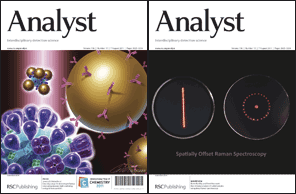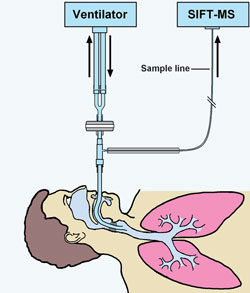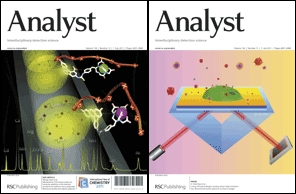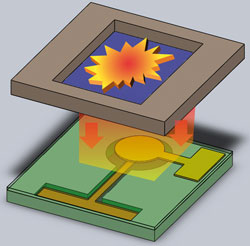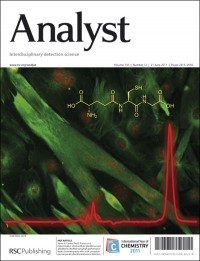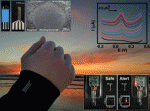Issue 15 is now available online, and we publish the first of an ongoing collection of articles looking at Grand Challenges in analytical science. In celebration of the International Year of Chemistry, leading scientists (including our own Board members) have put together papers outlining the current challenges faced in analytical science, and how these might be tackled.
There are contributions in this issue from Lloyd Smith, and from Board members Pavel Matousek, Takehiko Kitamori and Facundo Fernandez. Pavel’s minireview is also highlighted on the inside cover.
Minireview: Non-invasive analysis of turbid samples using deep Raman spectroscopy
Kevin Buckley and Pavel Matousek
Analyst, 2011, 136, 3039-3050
DOI: 10.1039/C0AN00723D
Critical Review: Extended nanospace chemical systems on a chip for new analytical technology
Kazuma Mawatari, Takehiko Tsukahara and Takehiko Kitamori
Analyst, 2011, 136, 3051-3059
DOI: 10.1039/C0AN00840K
Critical Review: To understand the whole, you must know the parts: unraveling the roles of protein–DNA interactions in genome regulation
Lloyd M. Smith, Michael R. Shortreed and Michael Olivier
Analyst, 2011, 136, 3060-3065
DOI: 10.1039/C1AN15037E
Poor quality drugs: grand challenges in high throughput detection, countrywide sampling, and forensics in developing countries
Facundo M. Fernandez, Dana Hostetler, Kristen Powell, Harparkash Kaur, Michael D. Green, Dallas C. Mildenhall and Paul N. Newton
Analyst, 2011, 136, 3073-3082
DOI: 10.1039/C0AN00627K
The stunning front cover of this issue highlights work by Jeremy Driskell from the lab of Ralph Tripp. They report the development of a simple, rapid, and sensitive method for quantitative detection of influenza A virus using dynamic light scattering and gold nanoparticle labels.
One-step assay for detecting influenza virus using dynamic light scattering and gold nanoparticles
Jeremy D. Driskell, Cheryl A. Jones, S. Mark Tompkins and Ralph A. Tripp
Analyst, 2011, 136, 3083-3090
DOI: 10.1039/C1AN15303J
Don’t forget that Analyst cover articles are free for 6 weeks!


